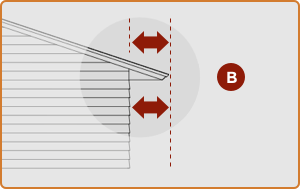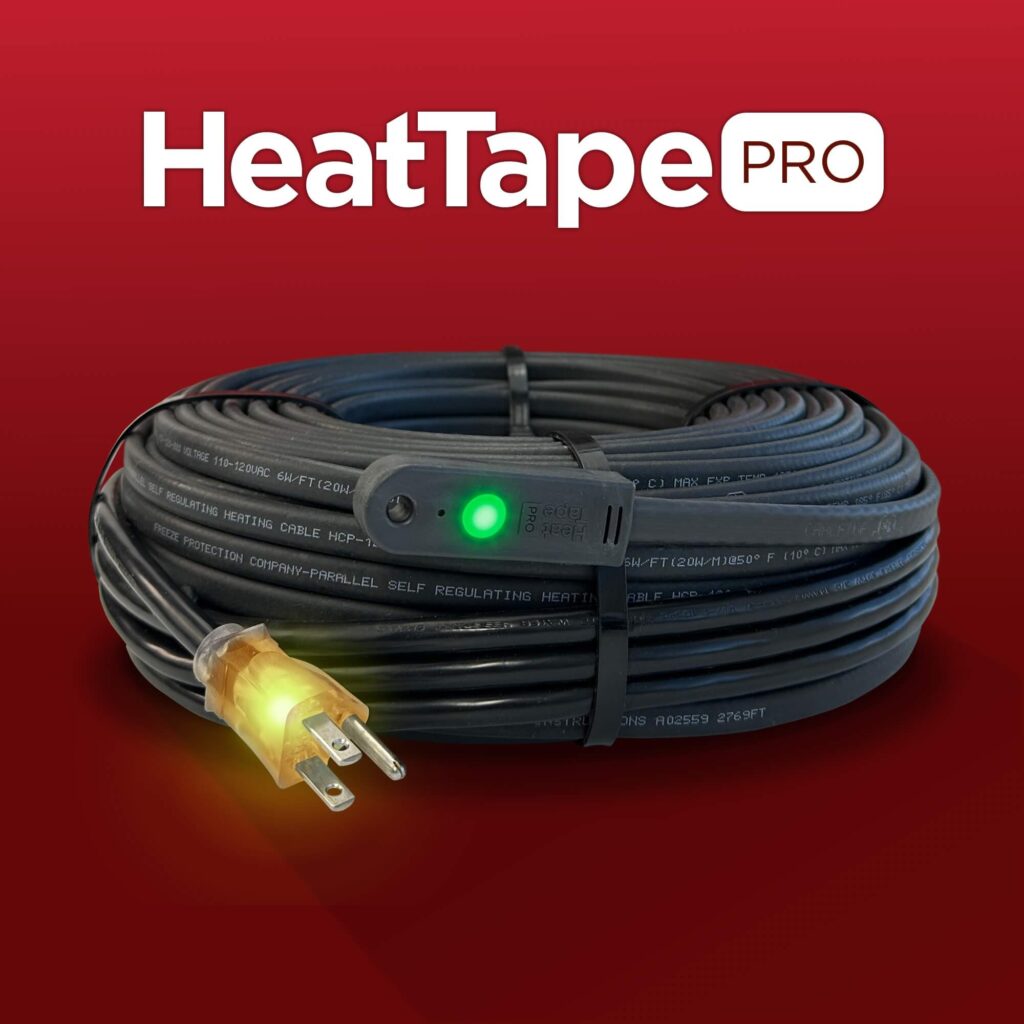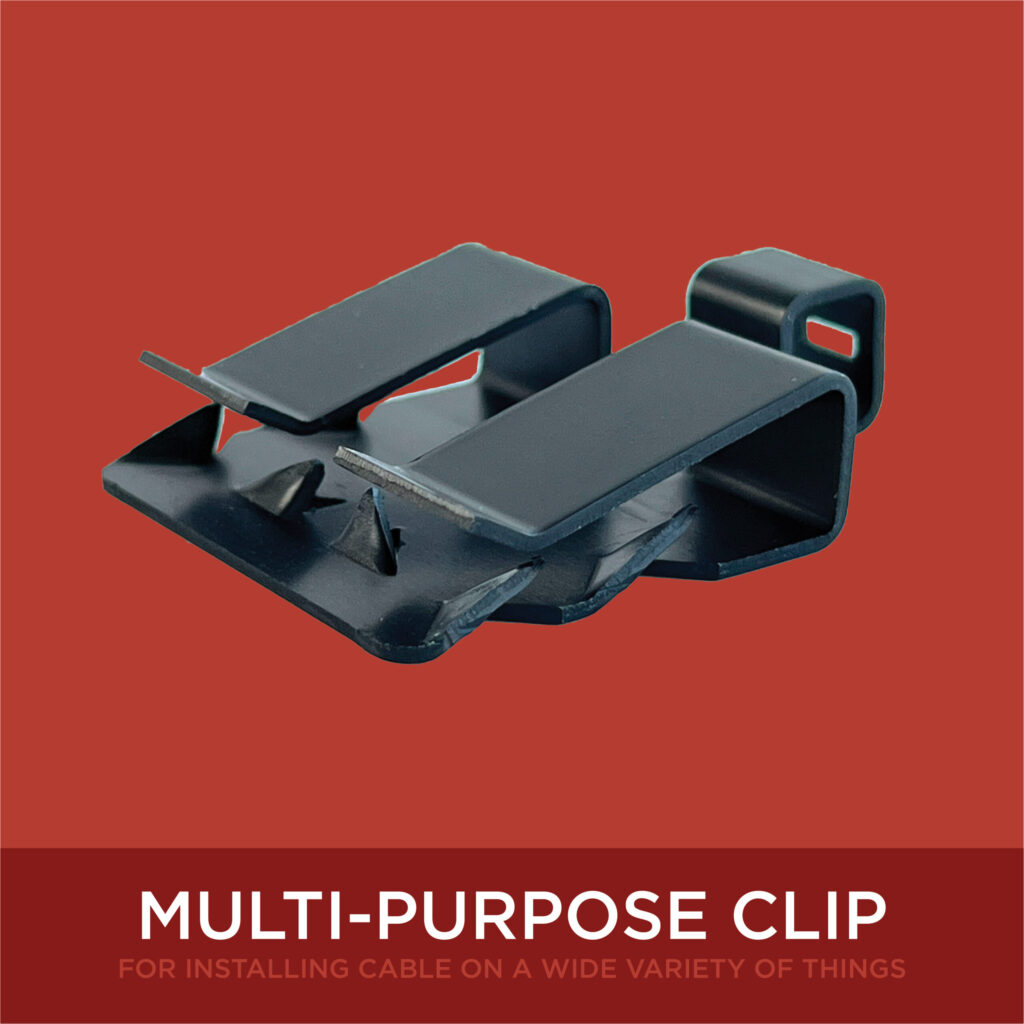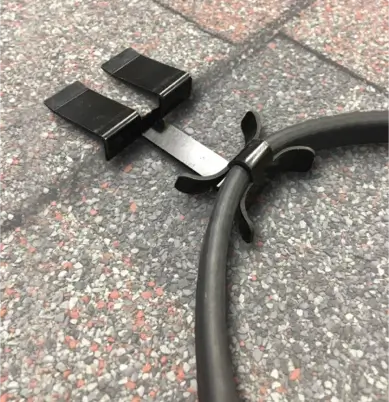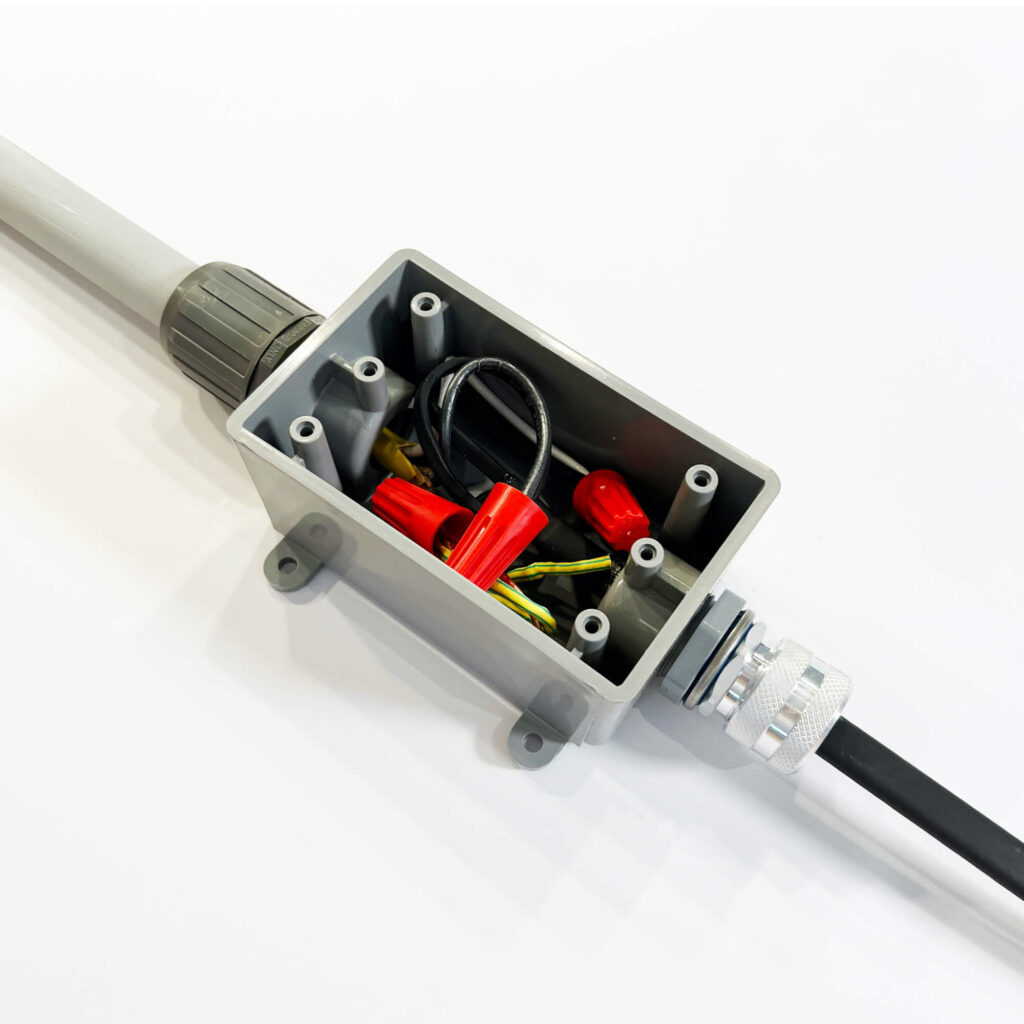Installing Heat Cable on Dormers
Heat Cable Power Supply from Junction Boxes
When possible, it’s great to have the power sources as close as possible to the heat tape installation area. In the case of a dormer that means installing the junction box under the eave (See Point 1). The wisdom being that because dormers are often isolated architectural features it is ideal to not have to trace heat tape from another area of the roof to feed the cable on the dormer. Use the HCK Hardwire Connection Kit for this connection. PRO TIP: Whenever possible have your electrician hook the heat cable junction box up to an illuminated switch that allows you to quickly power the cable on and off from the inside of the home. Standard receptacles can also be installed in these locations. On sloped roof systems, the most common of which is asphalt shingles, use GripClips™ to secure the heat tape to the roofing (Point 2). Closed valleys (AKA, ‘woven valleys’) are a great place to use the Multi-Purpose Heat Cable Clip because there is seldom the space available for tradition GripClip Applications (Point 3).
Woven valleys on asphalt shingle roofs are tricky areas for heat cable because roofing code dictates that no fasteners be driven within 6 inches of the centerline of the valley. Both the GripClip™ and the Multi-Purpose Clip allow installers to get heat cable where it’s supposed to be without compromising the integrity of the roof system because they require no nails. Always read the installation manuals for all products before you begin!
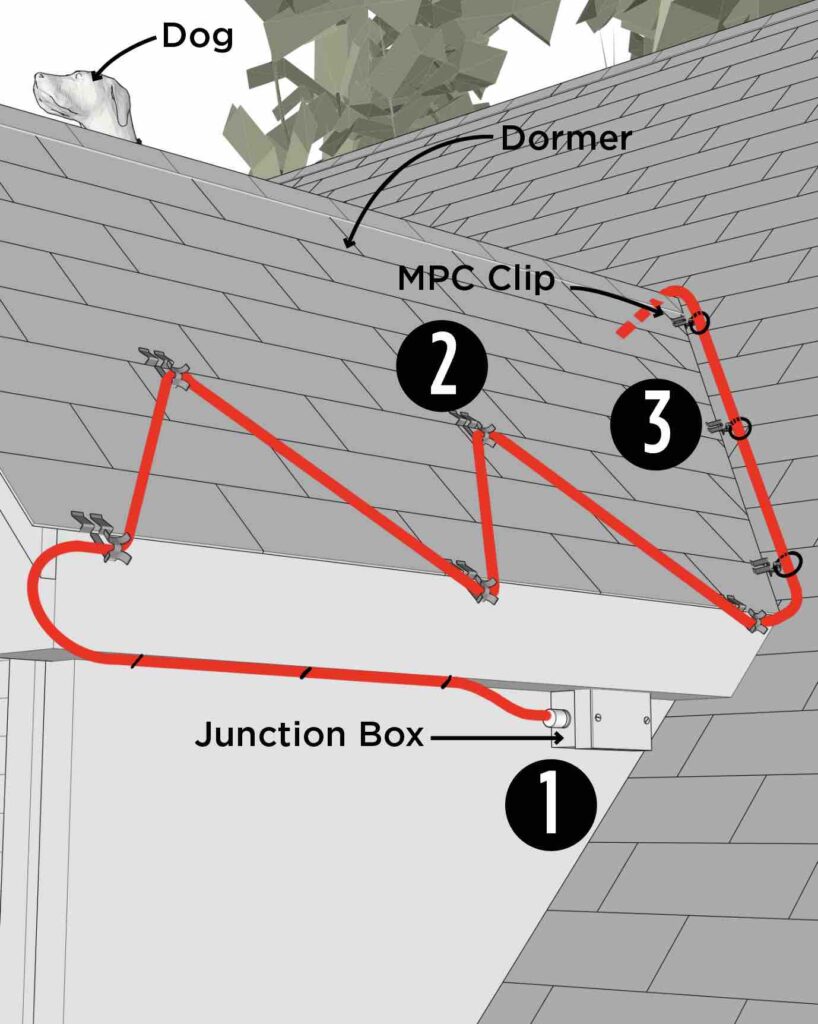
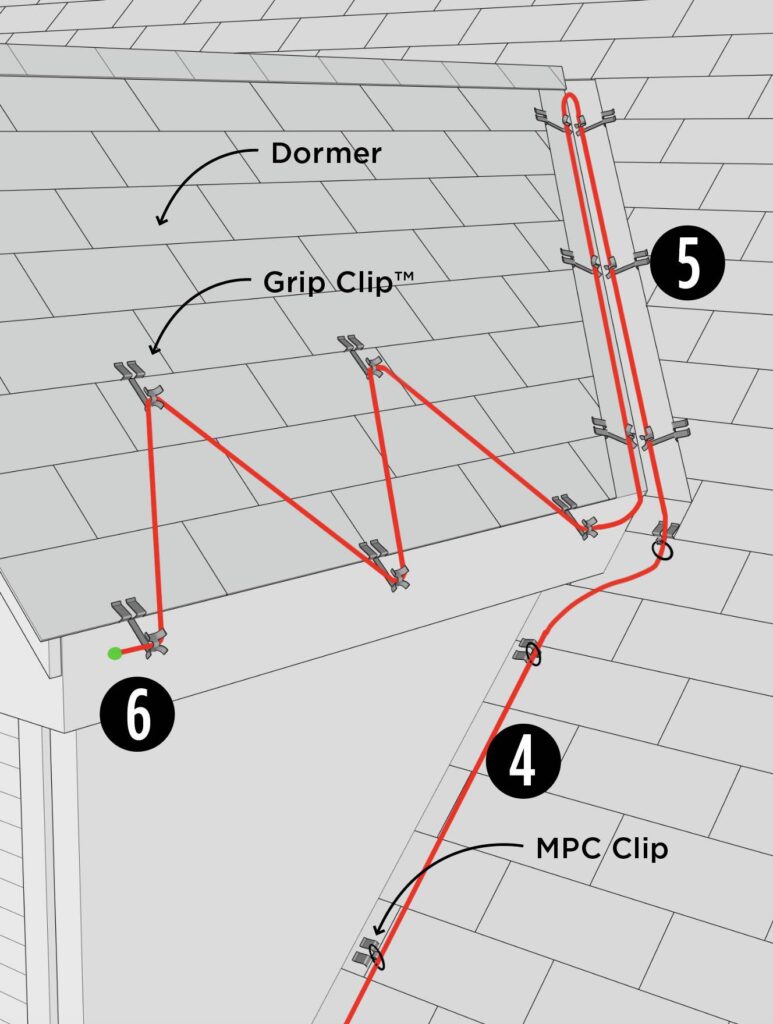
Heat Cable Power Supply from Below
Sometimes it’s simply not feasible to get a junction box installed under the eave on a dormer which means the heat cable needs a different power supply. One common use of the Multi-Purpose Heat Cable Clip (MPC-325) is to run the heat tape up the roof from a lower location (Point 4). The MPC allows for heat cable to be installed on most asphalt shingle roofs in any direction because it employs a UV-Resistant cable tie. It’s common to run heat cable from one location to the ultimate destination but you should factor the distance into the cable length you order. (Point 5) illustrates the use of GripClips™ in an ‘open valley’, where the valley flashing is exposed. The GlowCap™ end cap is a great feature to have on heat cables that are high or otherwise not fully visible from the ground because it allows one to quickly verify the cable is working all the way to the end of the heat cable. The GlowCap™ comes standard on all of our pre-terminated heat cables and is sold as a separate accessory for our field-installed spooled cables.
Heat Cable on Dormer Rules
Follow all of the standard heat tape tracing pattern rules on dormers as you would on other areas. For example, the cable should extend a minimum of 6″ beyond the exterior wall below. This means that a dormer with a 12″ eave depth should have cable that travels 18″ up the roof. Point B illustrates the concept of eave depth.
Referenced Products
